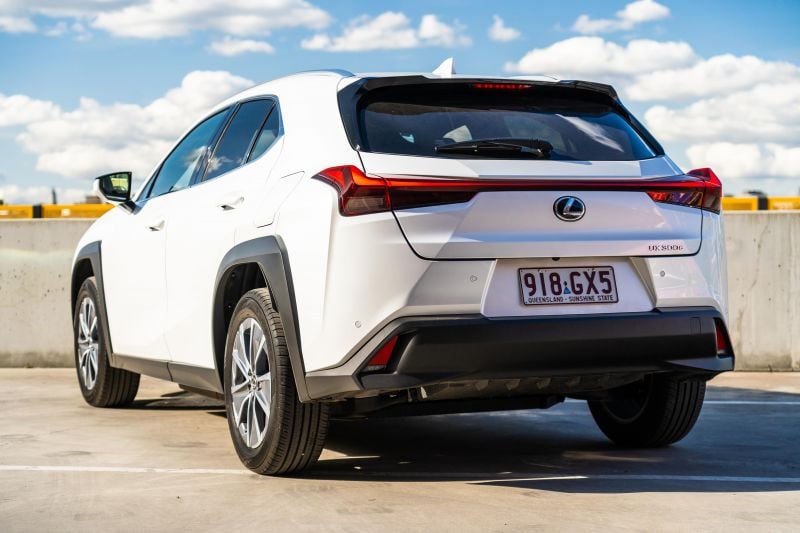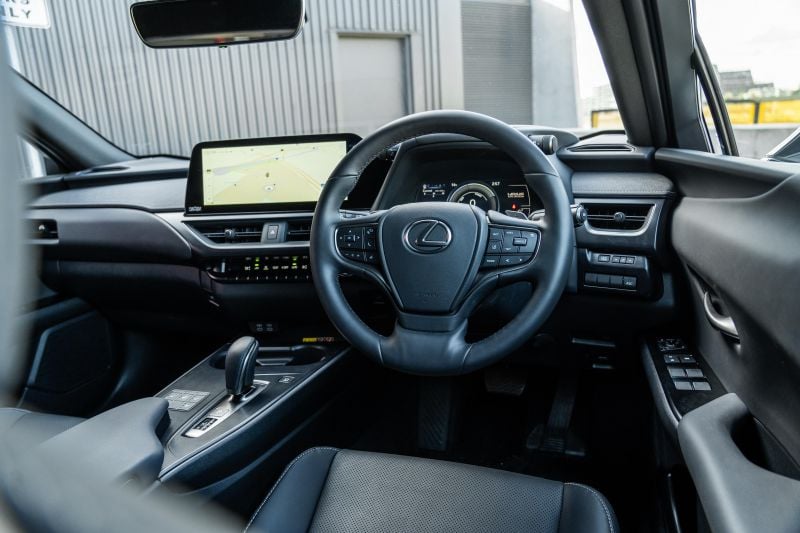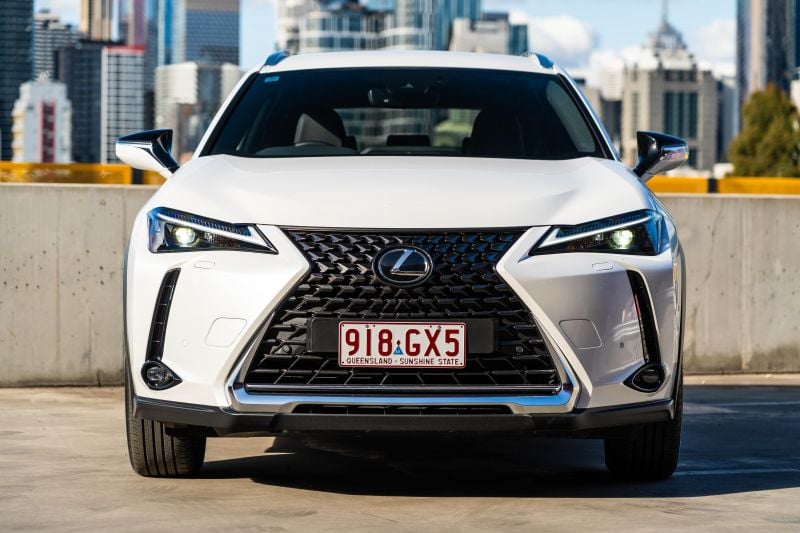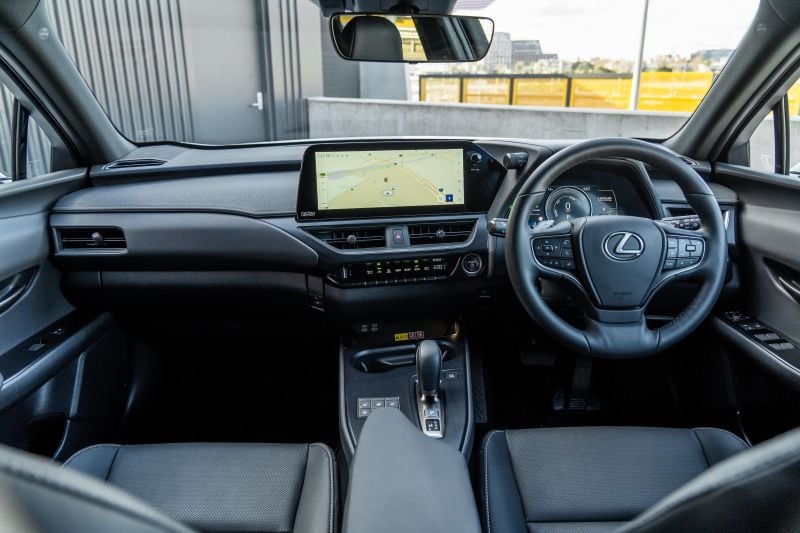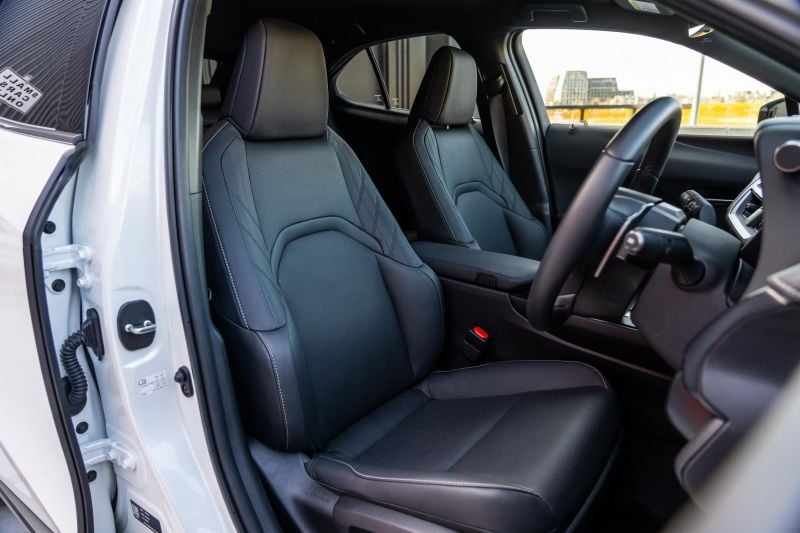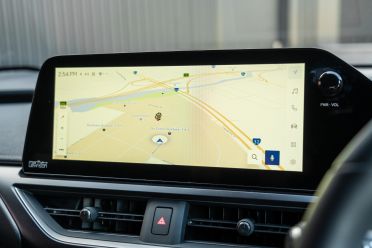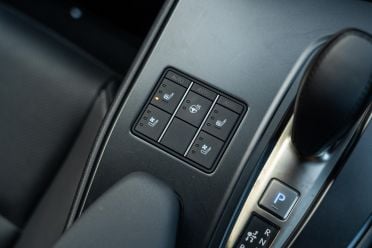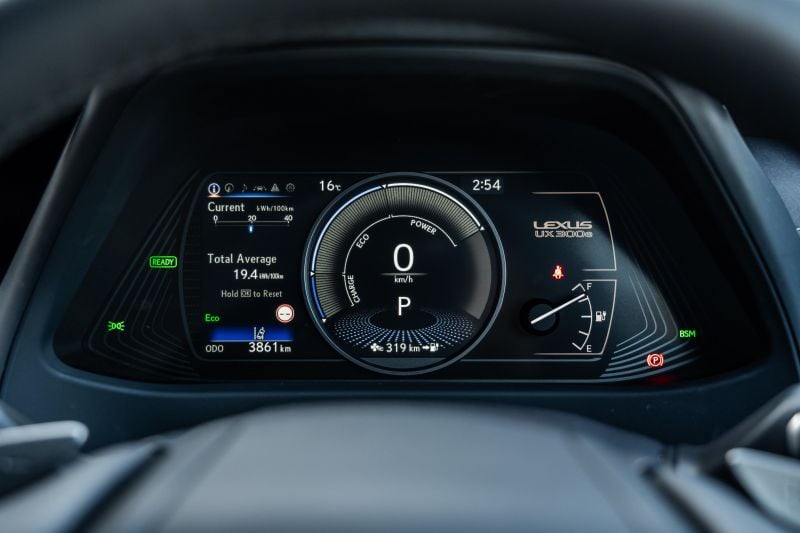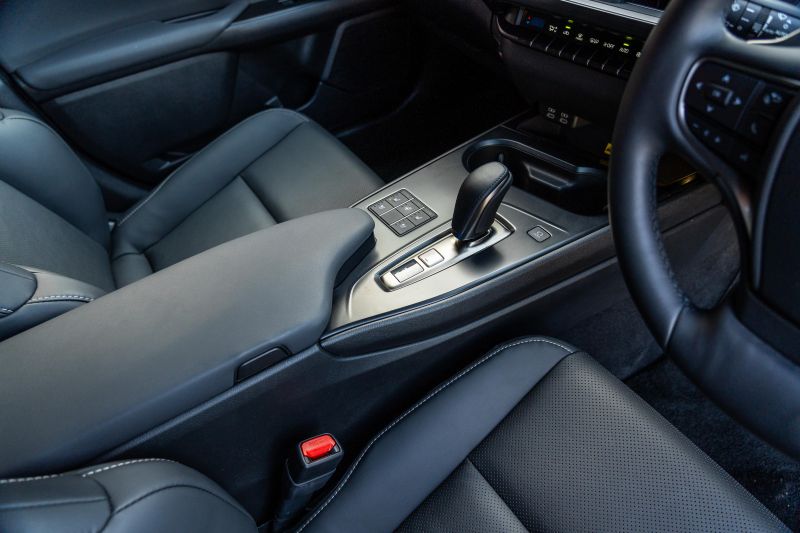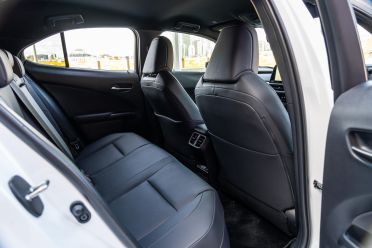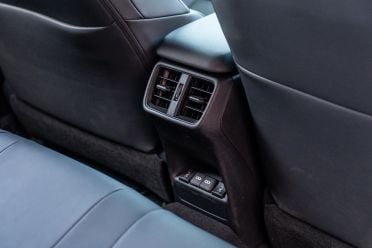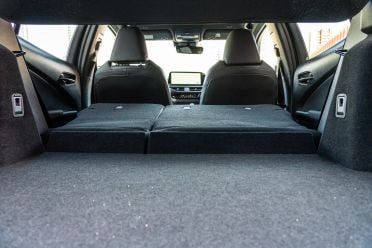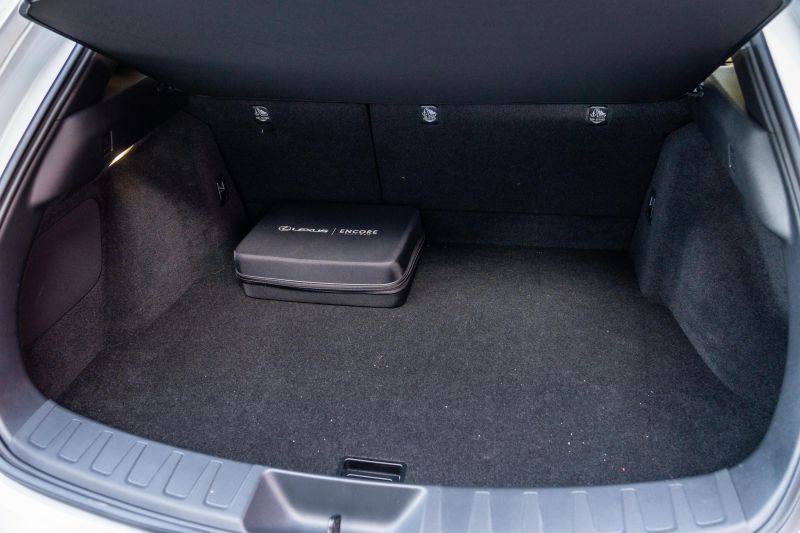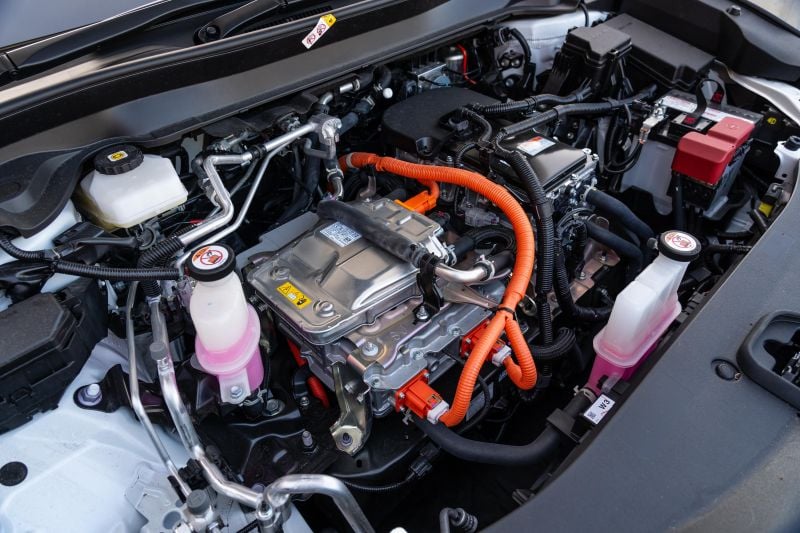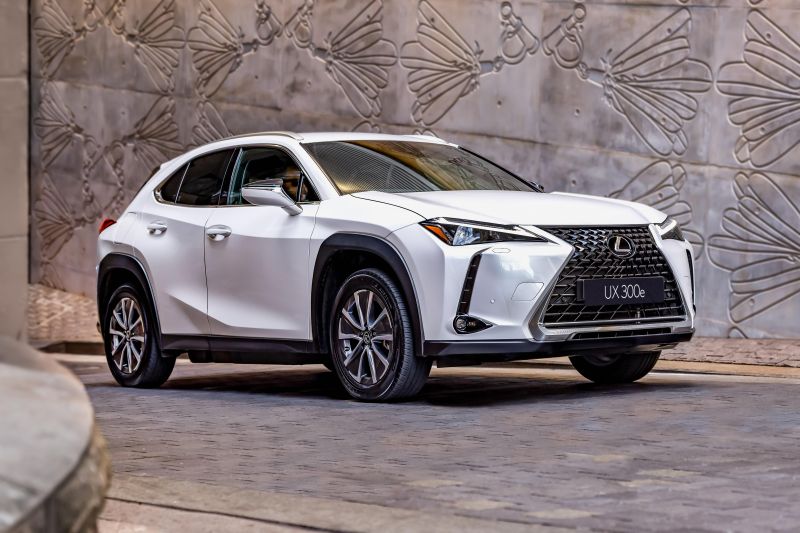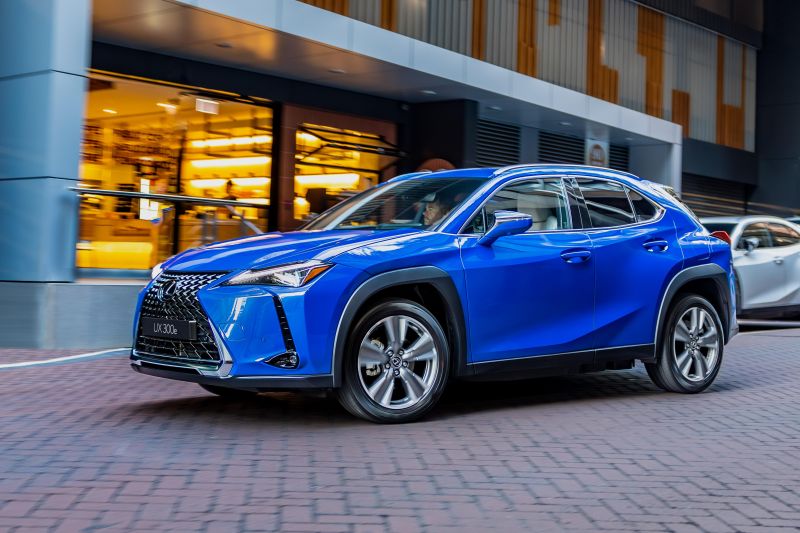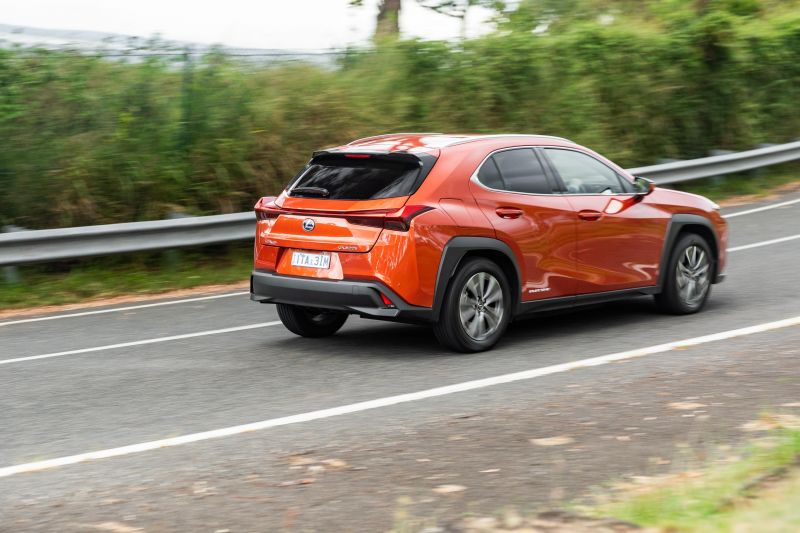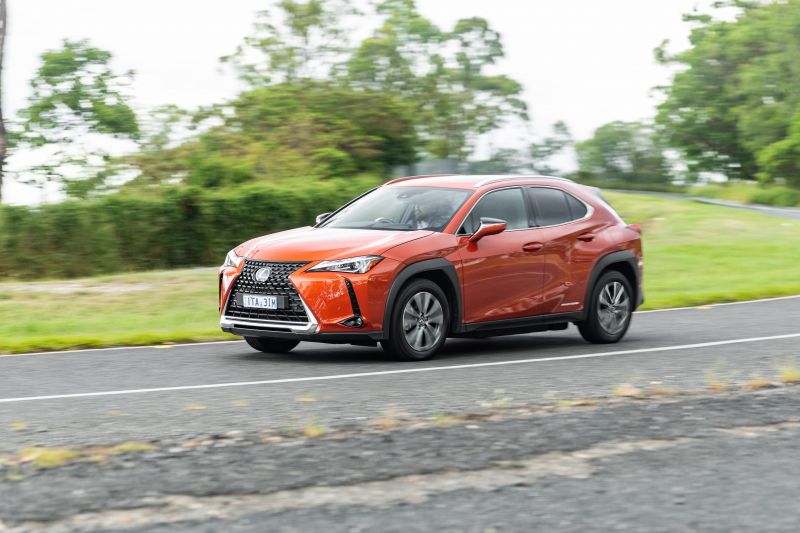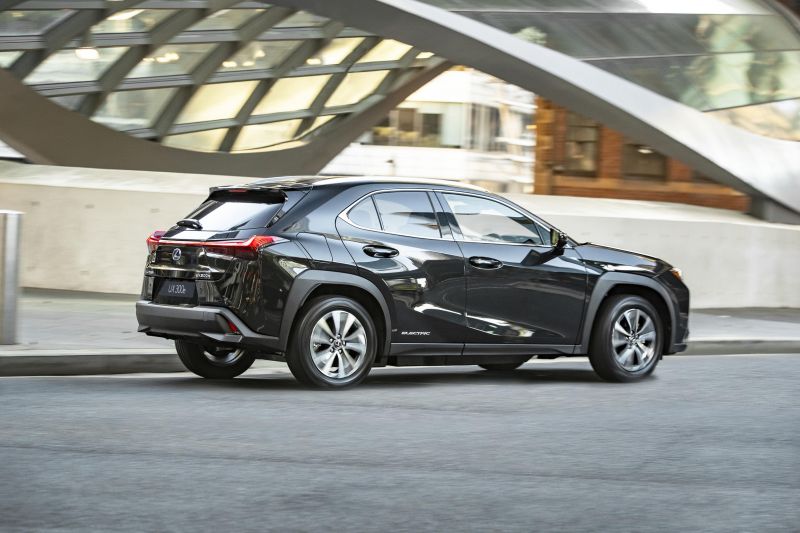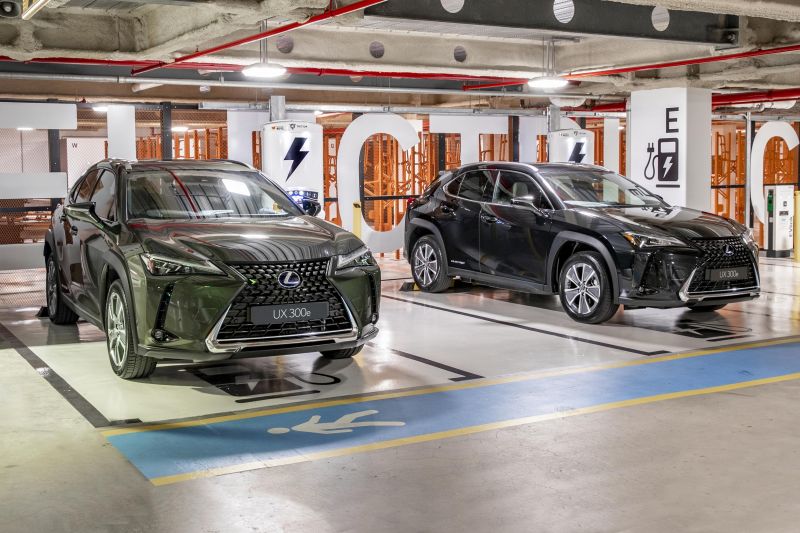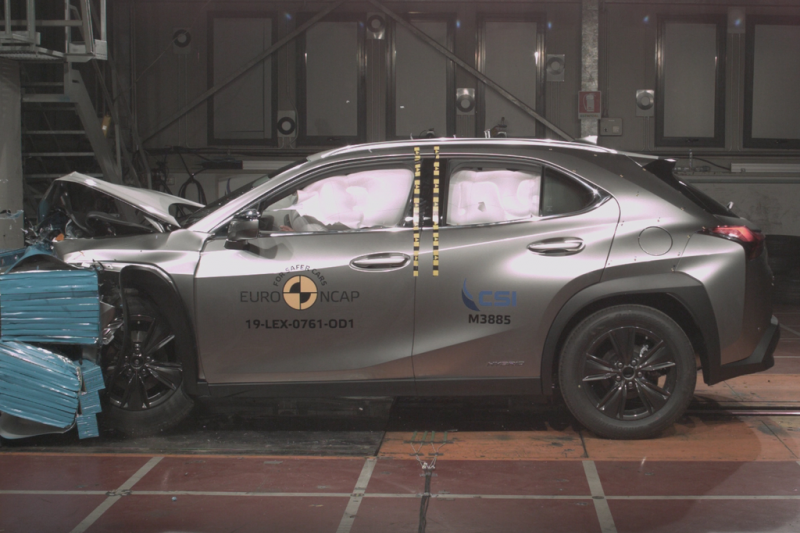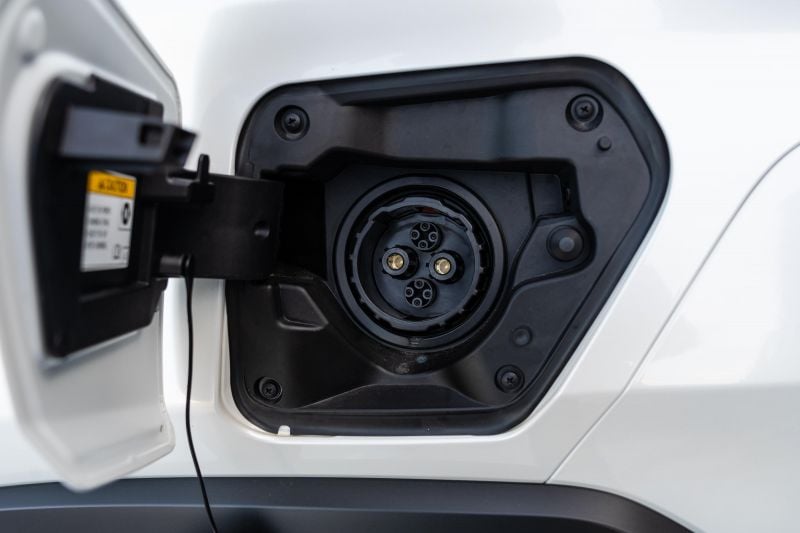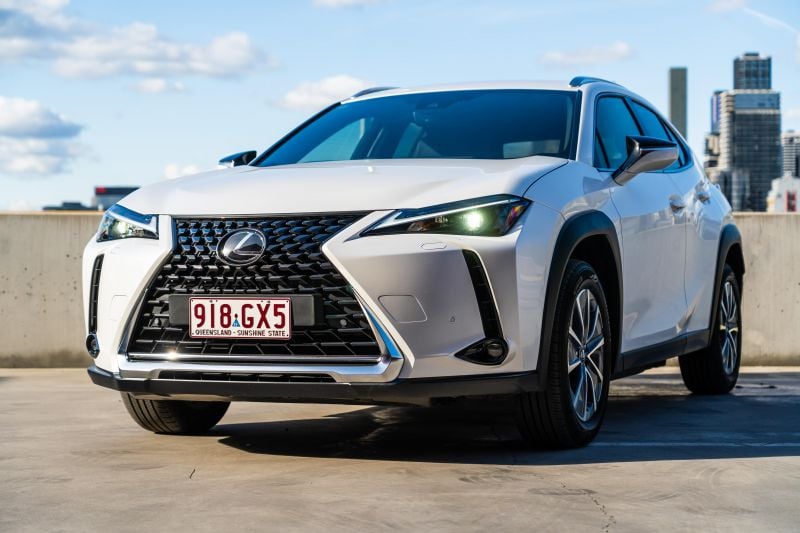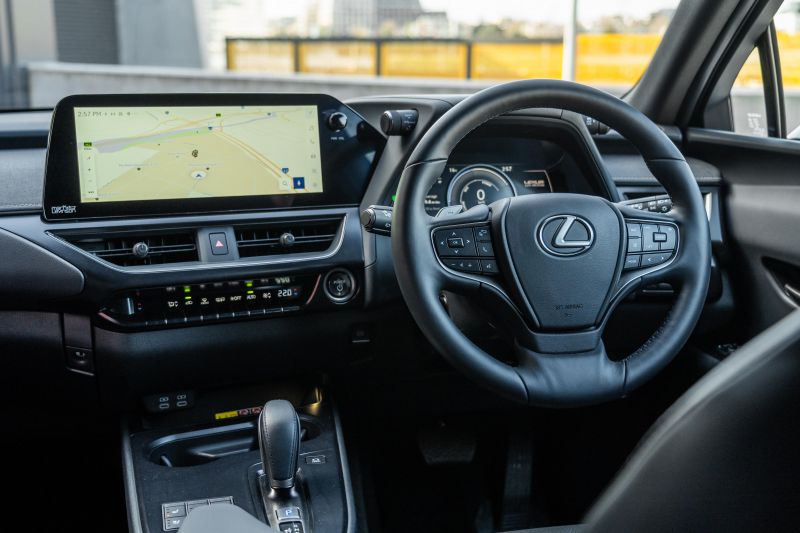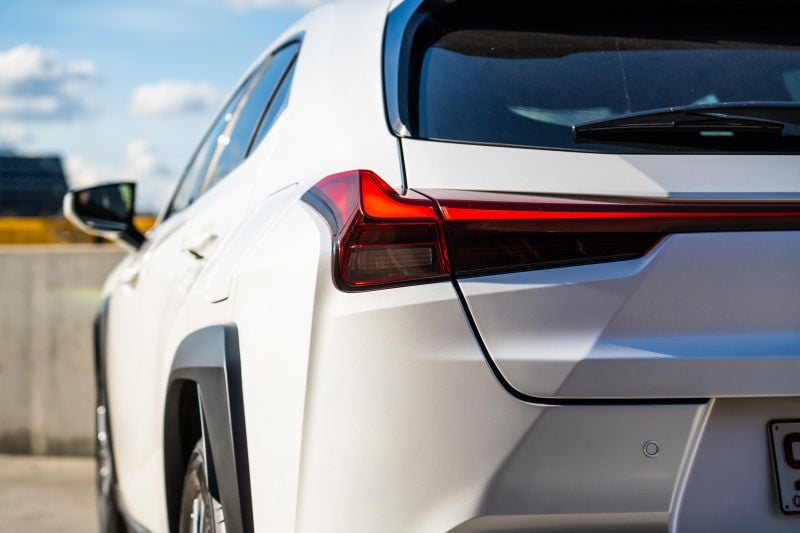2024 Lexus UX review | CarExpert
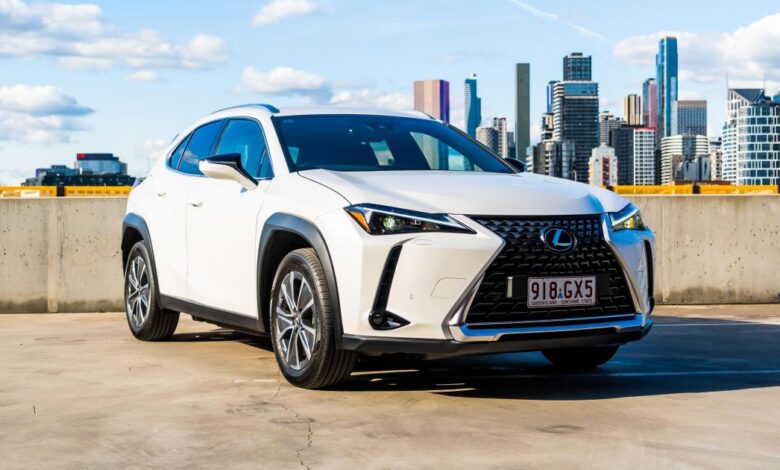
Lexus’ first electric vehicle (EV) in Australia is no longer one of a kind in the local model range, but it still has an important part to play.
It received a new, larger battery pack with improved driving range at the start of last year, but it’s otherwise remained largely unchanged since it arrived in 2021. For the most part, that’s a good thing.
That upgrade made it more competitive in the growing field of electric SUVs, and it’s retained its quiet, comfortable character.
But while other EVs have had their prices cut in recent months, Lexus hasn’t budged on the UX 300e since the addition of the new battery.
At around $80,000 it has some stiff competition, mostly from the likes of Tesla’s best-selling Model Y SUV and others like specific grades of the Hyundai Ioniq 5 and Kia EV6.
On test here is the 2024 Lexus UX 300e Luxury, the second-most expensive option in the UX range. It misses out on some extra bits and pieces seen on the electric Sports Luxury, but it retains the same powertrain and motor outputs.
Is it still worth considering if you’re making the jump to an EV, or would you be better off following the pack into a different option?
How does the Lexus UX compare?
View a detailed breakdown of the Lexus UX against similarly sized vehicles.

Lexus
UX
How much does the Lexus UX cost?
The cheaper of the two electric UX models bears a competitive price tag in the wider Lexus range, coming in at just over $80,000 before on-road costs.
That brings it in line with the Model Y Performance ($82,900) and Ioniq 5 RWD Dynamiq ($80,800) among others.
| Model | Price before on-road costs |
|---|---|
| 2024 Lexus UX 300h 2WD Luxury | $55,370 |
| 2024 Lexus UX 300h 2WD Luxury + Enhancement Pack | $57,420 |
| 2024 Lexus UX 300h 2WD Sports Luxury | $62,320 |
| 2024 Lexus UX 300h 2WD Sports Luxury + Enhancement Pack | $65,820 |
| 2024 Lexus UX 300h 2WD F Sport | $63,110 |
| 2024 Lexus UX 300h 2WD F Sport + Enhancement Pack 1 | $65,610 |
| 2024 Lexus UX 300h 2WD F Sport + Enhancement Pack 2 | $68,710 |
| 2024 Lexus UX 300h AWD Sports Luxury | $70,520 |
| 2024 Lexus UX 300h AWD F Sport | $73,210 |
| 2024 Lexus UX 300e Luxury | $80,720 |
| 2024 Lexus UX 300e Sports Luxury | $88,190 |
To see how the Lexus UX stacks up against its rivals, use our comparison tool.
What is the Lexus UX like on the inside?
It’s a 2024 Lexus for less than $100,000, which means it’s just about as luxurious as you’d like it to be without going over the top.
The main takeaway is that it presents like a normal car, which – if you’re familiar with some other EVs – is refreshing. That’s probably because it is just Lexus UX with an EV powertrain, but that’s a reason it works so well.
You still get loads of buttons for your standard functions, a physical climate control system, a steering wheel with loads of useful and logical controls, and an actual instrument cluster with dials and numbers! How exciting is that?
Jokes aside, it’s an enjoyable place to spend time. Those who aren’t a fan of button-laden vehicles likely won’t enjoy it as much, and that’s fair enough. In contrast, people like me who appreciate this kind of thing will feel right at home.
You’re not overwhelmed trying to figure everything out when you first step inside – instead you can take a moment to absorb it all and settle in. It’s easy to get into a comfortable seating position thanks to the powered seats and steering wheel, and if you’re the driver it’s worth setting the seat slightly lower if you want a sportier feel.
As you’d expect, the interior is finished in materials that are both nice to look at and interact with. The seats in particular are upholstered in synthetic leather, which is a very soft material Lexus has used generously in the past few years.
You get heating, ventilation, and powered lumbar, while the synthetic leather-wrapped steering wheel offers a heating function and is both soft and nicely proportioned.
You’ll find some more of that leather on top of the dashboard and on the centre armrest, but you can expect any surface inside the UX upholstered in that material will be soft to the touch. The dash is broken up with a textured material for a bit of variation.
Overall there’s a satisfying consistency to the cabin’s design, and the acres of black are accented by dark-grey metallic accents here and there like the Lexus emblem on the steering wheel.
As a bonus, the Mark Levinson-branded audio system sounds incredible and makes the driving experience all the more enjoyable.
What you might not notice as you get in is the way everything in the front of the cabin is oriented towards the driver. In some ways it’s reminiscent of a higher-end sports car, in others it bears a striking resemblance to something like a first-gen Toyota C-HR.
That’s not a bad thing, and the subtle tilt does well to make the driver feel at the centre of everything going on in the car. It also makes the infotainment and climate control easier to reach, though you may still need to lean forwards to interact with the far end of the screen.
The infotainment system is a 10.3-inch touchscreen display, which is graphically sharp and worked flawlessly in our week with the car. There’s a singular knob for power and volume, but every other infotainment-related function is either done via the screen or the buttons on the steering wheel.
Even without dedicated buttons, there are clear icons on the screen making it easy to navigate the various menus. Wireless Apple CarPlay is always a nice bonus, and as with the rest of the system there were no issues to report.
If you need to charge your phone, you’re spoilt for choice. There are two USB-C outlets beneath the climate control interface, a wireless charging pad, and a 12-volt outlet and another USB-C port in the centre console storage box.
Behind the steering wheel is a 7.0-inch driver information screen, though it isn’t set up like a normal screen you’d find in other new cars. Instead, it’s a version of a typical instrument cluster adapted to work with an EV, which means there aren’t any tachometer or speedometer gauges.
Instead, you get an EV power gauge with plenty of useful information, which you can cycle through using buttons on the wheel. The other side offers a charge gauge with an electrified petrol pump icon, as well as a reminder of the car you’re driving above.
While it’s a bit basic and you could argue it’s beginning to look old, it works well and makes sense. The only things I find unusual are the icons for things like the headlights and parking brake, which seem to float aimlessly in the void outside the digital display.
There’s a lot of space in the bezel around the instrument cluster to make the layout of icons seem more intentional, instead of filling up the area with decorative lines and logos.
Storage up front is more or less as you’d expect. There are two cupholders behind the wireless charger cubby, a long centre console storage box with a soft floor, bottle holders in the doors, and an average-sized glovebox ahead of the passenger.
Nothing on the storage department is too small or exceptionally large, with the cupholders in particular best suited to cans or coffee cups. At least you won’t have to worry about dirtying the centre console too much, as there’s hardly any gloss black plastic to be found anywhere.
Lexus has fitted many of the UX’s flat surfaces with textured plastic instead, which has a pleasant dull sheen and is less likely to attract fingerprints and smudges.
Otherwise, everything feels sturdy. The buttons are all well-made with a good feel, the gear selector moves with a solid chunky action, and there aren’t any interior rattles or squeaks to speak of.
The second row is where the UX 300e starts to fall over. Getting in isn’t as easy as it could be, as its deceptive small SUV stature means the door opening is narrow and a bit too tight to comfortably get people and objects in and out.
Additionally, the rear doors don’t open as wide as they could. Once you’re in, space doesn’t get much better.
You’ll be comfortable enough for headroom, and I could sit behind my own driving position at 5’8″ tall. The main issue is toe-room, because if you want to have the driver’s seat adjusted in a lower position rear passengers don’t have any to work with.
On top of that, there isn’t a huge amount of legroom to stretch into. At least there is a fold-down centre armrest with cupholders, as well as rear air vents, two charging ports, and heating for the two outboard seats.
Storage is otherwise limited to bottle holders in the doors and a map pocket on the back of the front passenger seat. The nice materials from the front carry through to the back, and the rear seats themselves are comfortable enough to sit in for longer periods of time.
The compromised rear space carries through to the boot, which is again on the smaller side. At 314 litres, it’s noticeably smaller than the Hyundai Kona Electric at 407 litres – another petrol car-turned EV.
Vertical space is limited because of the sloping roofline, but there’s plenty of space lengthways to be able to fit grocery bags with room to spare.
Boot space is deceptively narrow, as longer items won’t fit unless you fold the rear seats down. There’s no more space to be revealed by lifting the floor, as that space is dedicated to the tyre repair kit included as standard.
A nice bonus is the complimentary access to Lexus’ Encore Platinum Electrified program, which gives you access to fast charging, a dedicated home charger, and two free charging cables. The latter makes it easy to plug the car into one of your home power points to let it slowly charge overnight.
The powered tailgate did have a unique quirk. As I’d use the boot to pack away the charging cable, it’d sometimes decide to close on its own while I was still standing there. It’s not hard to stop it closing by holding it up, but it’s still unexpected for an otherwise solid (if not undersized) package.
| Dimensions | Lexus UX 300e |
|---|---|
| Length | 4495mm |
| Width | 1840mm |
| Height | 1545mm |
| Wheelbase | 2640mm |
| Cargo capacity | 314 litres |
To see how the Lexus UX stacks up against its rivals, use our comparison tool.
What’s under the bonnet?
The 300e drops the hybrid powertrain offered across the rest of the UX range in favour of a single-motor electric setup. It’s now fed by a significantly larger battery than when it first launched, providing a 135km boost in claimed driving range.
| Specifications | Lexus UX 300e |
|---|---|
| Drivetrain | Single-motor electric |
| Battery | 72.82kWh lithium-ion |
| Power | 150kW |
| Torque | 300Nm |
| Driven wheels | Front-wheel drive |
| Weight | 1840kg (kerb) |
| Power consumption (claimed) | 16.9kWh/100km |
| Power consumption (as tested) | 19.2kWh/100km |
| Claimed range | 440km (WLTP) |
| Max AC charge rate | 6.6kW |
| Max DC charge rate | 50kW |
To see how the Lexus UX stacks up against its rivals, use our comparison tool.
How does the Lexus UX drive?
If you’re after a refined, comfortable, and quiet on-road experience in an EV, this car should be high on your shopping list.
When you hit that button to the left of the steering wheel, you’d be forgiven for expecting an engine to start up given the combustion origins of the UX. Of course there’s no sound, and you’re ready to drive straight away.
Right and down on the gear selector puts the car into drive, and setting off brings with it another bout of silence. If you’re nitpicking you’ll notice a faint electric whirr as the motor gets up to speed.
Getting up to speed in the UX 300e is no sweat, because even if power outputs seem modest on paper there’s no missing that initial torque hit when you mash the throttle.
It may surprise you to realise how fast it takes off. It takes around seven or eight seconds to get to 100km/h, but you’ll be at the limit quicker than you realise thanks to how refined the ride is. Hard acceleration does reveal some of the problems with the drivetrain though.
The UX 300e is only offered with front-wheel drive, and it makes too much torque to be sent to only two wheels. It has a tendency to break traction from a standstill if you’re not careful, and you’ll notice a degree of torque steer at the same time.
We think this car would benefit greatly from a dual-motor all-wheel drive system like many other EVs on the market, as it would mean both extra grip and the potential for a boost in power.
You can dull its power output by selecting Eco mode with the small dial on the upper left of the dash, which works well in city driving. The drop in power is noticeable, but when there’s no need to rush from light to light it’s perfect – plus you can save some charge while you’re at it.
It’s one of the few times you will be able to save charge when driving the UX 300e, because it turns out to be quite thirsty on its electricity consumption.
We saw a power consumption of 19.2kWh/100km in our week with the car, which was well above Lexus’ claim. It really only dropped the low 19s after a stint in the city, while it sat at 20kWh/100km for the rest of the time.
There was a heavy skew towards highway driving while we had the car, which is a known weakness of EVs compared to internal combustion vehicles. It would’ve been nice to see the figure a bit closer to the manufacturer claim, especially because we expected a bit more from its upgraded battery.
The UX 300e’s battery capacity was boosted from 54.4kWh to nearly 73kWh in 2023, bringing with it an increased claimed driving range of 440km. In the context of 500km-plus EVs at a similar price point – like the Tesla Model Y Performance, which is a lot faster – it still feels like it’s lagging behind.
I’m no fan of Tesla, but if I was paying more than $80,000 for an EV from a legacy brand like Lexus (or Toyota) I’d be wanting something that could at least match or even outdo the sales-dominating Model Y.
The most convenient way to charge the UX 300e is at home using one of the standard wall-socket cables provided. While it doesn’t charge fast, it’s perfect to leave it to juice up overnight and be ready for the morning.
A day’s travel of 120km on the highway would drop its battery charge to slightly above half, and when left on charge for 12 hours overnight it’d be comfortably at capacity by the time it was time to leave again. Fast chargers are always an option too, but it’s easier to rock up at home, plug it in and forget about it.
Interestingly, it has two different types of charger connectors on either side of the car. One is a standard Type 2 AC plug, but the other is an older-standard CHaDeMO port for DC fast charging.
Such ports may soon become harder to find at public chargers in Australia, as CCS becomes the preferred standard. There are still plenty of CHaDeMO chargers around for the time being so it’s no cause for concern on the UX 300e, but as with any EV it pays to plan ahead on long drives.
It’ll charge at up to 50kW on a public DC fast charger, which means you’ll be sitting longer compared to some of its higher-capacity rivals.
Infrastructure quirks aside, the UX 300e is a superb car to drive. Whatever Lexus has done to refine the ride quality and on-road experience has done wonders to set it apart from some of the other EVs on the market right now.
As mentioned, it’s incredibly quiet. Even with no engine to mask sound from the highway it lets in minimal road and wind noise to the point where there’s nothing of note to speak of. It’ll happily eat up the kilometres between charges.
Highway driving is supported by adaptive cruise control with lane-keep assist, which works reliably and has no problem keeping the car situated. Even around tighter bends, like on freeway interchange ramps, it isn’t scared to crank on the necessary steering lock while keeping up its speed.
The system is easy to interact with too, with dedicated buttons on the steering wheel where they belong.
On country roads, the UX rides convincingly over bumps and rough patches. If you need to overtake a slower moving vehicle ahead, there’s plenty of power to quickly shoot past on the other side of the dotted line when safe.
When it came to the bends, we were surprised at how well it held itself together. It’s not unreasonable to expect EVs to weigh more than more traditional cars, and at nearly two tonnes the UX 300e certainly isn’t light.
Even with that knowledge, it doesn’t feel heavy. It doesn’t do anything you wouldn’t expect a lighter car to do, and in some ways I suspect the heftier weigh-in helps in ironing out smaller bumps and imperfections on the road.
Around turns it stays comfortably planted, with no real tendency to understeer if you’re not on the power. In that sense it’s worth being patient around turns before laying into the throttle, otherwise you could run the risk of breaking traction mid-turn – especially if it’s damp.
While highway driving is comfortable, there are a couple of tendencies the car has depending on the situation. The first is a warning on the dash and accompanying beep, which pops up to tell you regenerative braking is limited because battery charge is high.
It’ll appear when you go above 50km/h, and stay on until you come to a stop. You can dismiss it while you’re on the move, but it’ll show up again a few seconds later no matter what.
That means it hides all that useful information on the left side of the instrument cluster, at least until you press a button to briefly remove it or when the battery charge drops below a certain level and regenerative braking is re-established.
The other is a speed camera warning on the highway, which beeps loudly twice when you’re approaching a static camera. It can catch you off guard if you’re not expecting it, but a trawl through the infotainment system for vehicle settings will allow you to adjust it.
Aside from its refinement, the UX 300e does regenerative braking very well. When it’s fully available at less than three-quarter charge, you can select “B” engine braking mode on the gear selector to receive full control over the system.
There are paddles behind the wheel to adjust the level of regenerative braking active, and at higher levels of braking you can crawl through traffic with one pedal or descend steeper hills without touching the brake pedal – all while gaining back a little bit of charge.
It’s a welcome addition, and I like that entering higher levels allows the car to really jam on the “brakes” to slow itself down substantially. It isn’t quite single-pedal driving as it won’t bring you to a stop, which is worth keeping in mind if you’re in city traffic.
Additionally, driving and parking in the city is easy thanks to the plethora of sensors, and such environments are where the UX 300e feels like it naturally belongs.
It does, however, miss out on a surround-view camera, which is only available on the Sports Luxury variant.
Overall it is a well put-together package, but we just wish it had the benefit of AWD to back up that refined experience and upmarket price tag.
What do you get?
There are two grades of UX 300e, and our tester was the cheaper of the two. It misses out on luxuries including 18-inch alloy wheels, a sunroof, head-up display, and surround-view camera.
Lexus UX 300e Luxury highlights include:
- 12.3-inch infotainment system
- Wireless Apple CarPlay
- Wired Android Auto
- DAB+ digital radio
- Satellite navigation
- Wireless phone charging
- 7.0-inch driver information screen
- LED headlights and fog lights
- Keyless entry and start
- Hands-free power tailgate
- Rear privacy glass
- Power-adjustable steering column
- Eight-way power front seats
- Heated and ventilated front seats
- Heated outboard rear seats
- Heated steering wheel
- 13-speaker Mark Levinson sound system
- Power-folding, heated exterior mirrors
- AEB with pedestrian/daytime cyclist detection
- Adaptive cruise control with stop/go
- Blind-spot monitoring
- Lane Trace Assist
- Traffic sign recognition
- Rear cross-traffic assist
- Automatic high-beam
- Front and rear parking sensors
- 17-inch alloy wheels
- Black or Rich Cream interior trim
Is the Lexus UX safe?
The Lexus UX 300e has a five-star ANCAP safety rating based on testing carried out by Euro NCAP in 2019.
| Category | Lexus UX |
|---|---|
| Adult occupant protection | 36.7 out of 38 (96 per cent) |
| Child occupant protection | 43.1 out of 49 (88 per cent) |
| Vulnerable road user protection | 39.4 out of 54 (82 per cent) |
| Safety assist | 10.6 out of 16 (81 per cent) |
Standard safety equipment includes:
- Autonomous emergency braking (AEB)
- Pedestrian detection (day, night)
- Cyclist detection (day)
- Adaptive cruise control with stop/go
- Blind-spot monitoring
- Lane Trace Assist
- Traffic sign recognition
- Rear cross-traffic assist
- Automatic high-beam
- Front and rear parking sensors
- 8 airbags
UX 300e Sports Luxury adds:
How much does the Lexus UX cost to run?
The Lexus range is backed by a five-year, unlimited-kilometre warranty. The EV battery is covered for up to 10 years or 160,000 kilometres if its storage capacity falls below 70 per cent.
The UX 300e comes with a three-year subscription to Lexus’ Encore Platinum Electrified program, which includes vehicle loans, access to valet parking vouchers at participating locations, and three years of free charging at Chargefox public charge stations.
Buyers of the UX 300e also receive a professionally installed AC home charger from JET Charge as part of their purchase.
| Running costs | Lexus UX 300e |
|---|---|
| Warranty | 5 years, unlimited kilometres |
| Battery warranty | 10 years, 160,000 kilometres |
| Roadside assistance | Up to 5 years (Encore Platinum Electrified) |
| Service intervals | 12 months or 15,000 kilometres |
| Capped price servicing | 5 years or 75,000 kilometres |
| Total capped price service cost | $1475 |
To see how the Lexus UX stacks up against its rivals, use our comparison tool.
CarExpert’s Take on the Lexus UX 300e Luxury
The UX 300e really is a nice car, but we’re not sure it’s nice enough to justify the price tag.
There’s no denying Lexus has done what it does best in this car; creating comfortable upmarket interiors inside stylish shells atop famously dependable Toyota bones.
The interior itself is the highlight, as its conventional layout is familiar despite its EV underpinnings. Where others tend towards minimalism, having plenty of buttons that are clear with dedicated functions helps to make it easy for a traditional motorist to adapt.
Its generous use of soft, high-quality materials makes it a pleasant place to spend time, and even after long drives we didn’t feel fatigued or uncomfortable behind the wheel. It’s small in the rear though, which has always been a UX complaint.
Then there are the mechanics, which offer plenty of power and a refined ride. It’s not skittish and doesn’t feel like it’s going to fall off the road under its own weight, which again helps to make it feel like a normal car and not an ultra-modern electric fridge.
But, it could do with more range despite being fitted with a larger battery, and it really needs an all-wheel drive system to allow it to get its power to the ground more efficiently.
As with most EVs it’s also better suited to slow driving around town, as it has a tendency to eat through charge on extended highway runs. There are no complaints with its regenerative braking setup beyond the warning at high charge, as it’s reassuring to know the car will be able to consistently control its speed if you ask it to.
It’s nice you get a free three years of Encore Platinum Electrified, but at this price we’d almost want it to be a permanent thing.
When you consider the competition at $80,000, the Model Y jumps out as an obvious EV benchmark for the UX 300e. Sales figures reflect that too, as last year there were a total of 2468 UX examples (including hybrid and EV) sold against 28,769 Model Ys.
For what it is, and as much as we like it with its improved battery, it’s hard to recommend the UX 300e because of price alone. Of the two available, the Luxury would be the pick over the Sports Luxury, purely because it’s mechanically the same and we feel the few extras don’t add enough to justify the higher premium.
So while it’s a good car as is, it could be improved greatly by a few drivetrain tweaks and a few thousand shaved off the sticker price.
Click the images for the full gallery
MORE: Buy a Lexus UX
MORE: Everything Lexus UX
